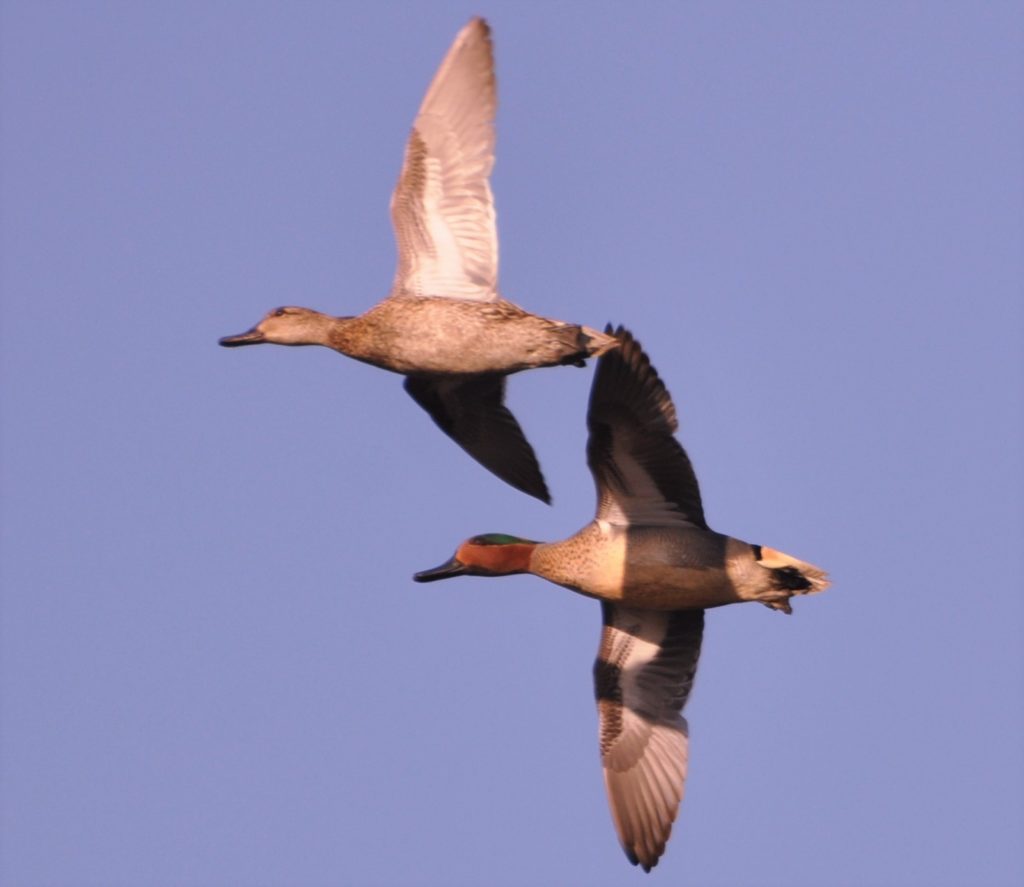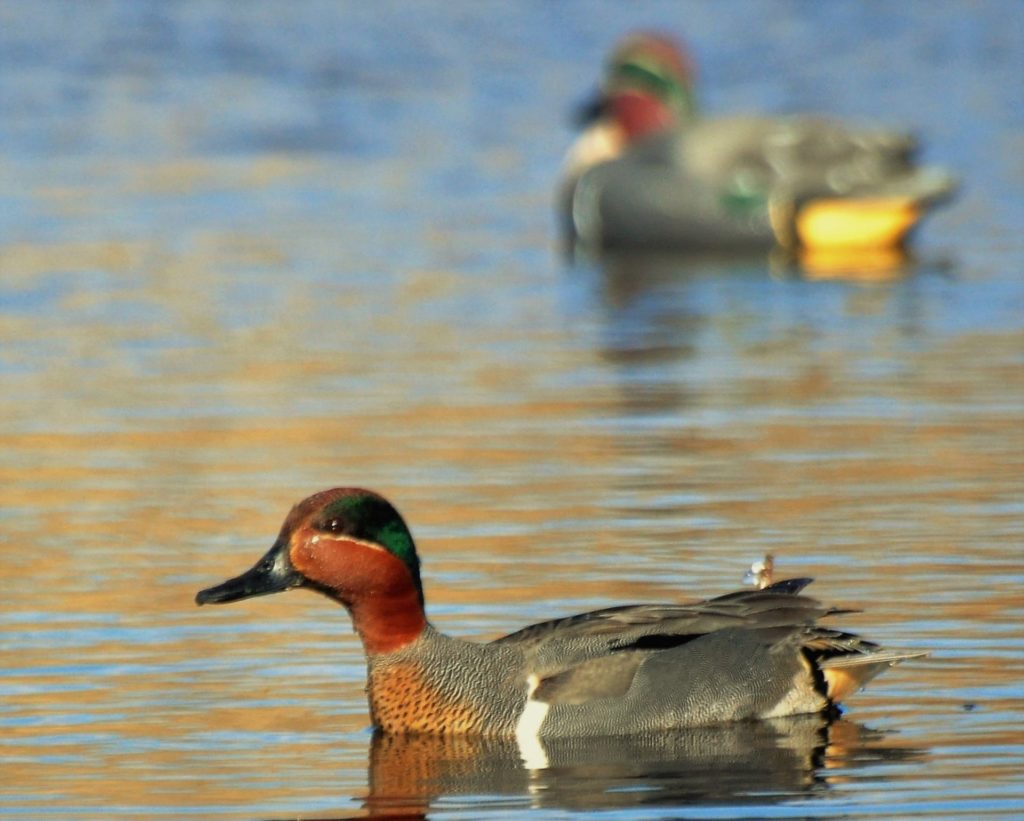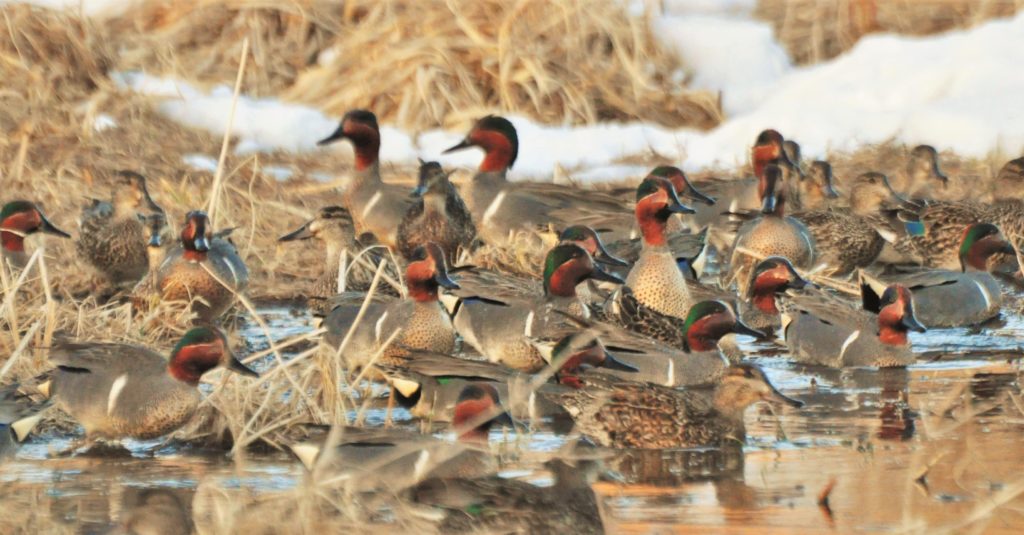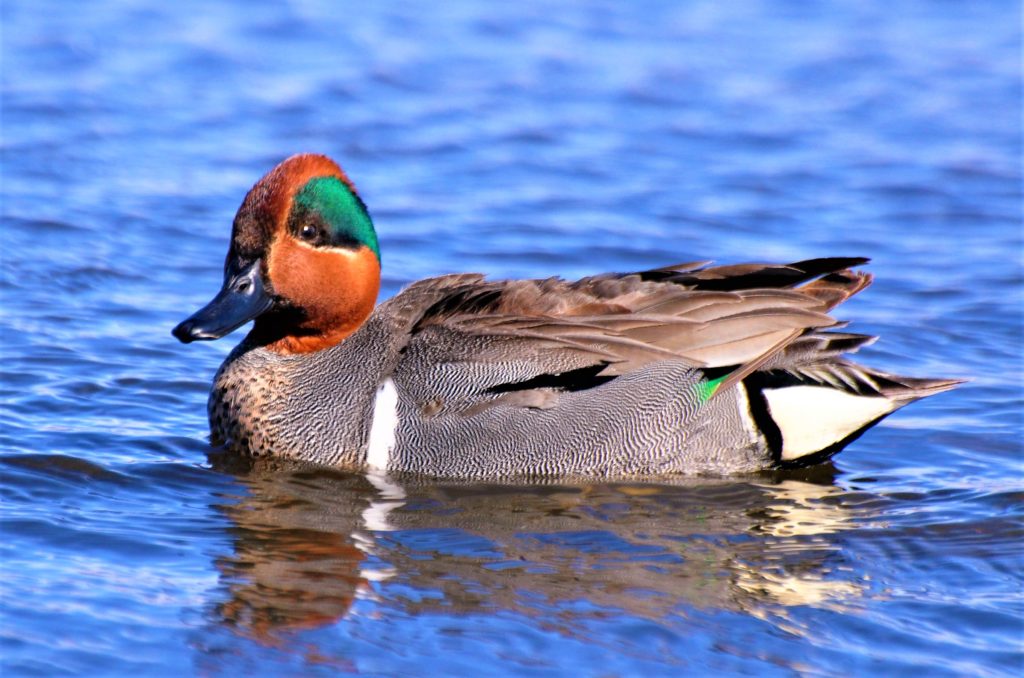Photography courtesy of Lowell Washburn, all rights reserved.
The Stage Was Set
If There Was Ever A Time to Be In The Duck Blind, This Was It
Iowa’s waterfowl seasons have officially concluded. Gone but not forgotten, the 2020 duck season will be remembered by many hunters as the best in recent years. I whole heartedly agree with that assessment. For me, it was the best season since 1979.
Like snowflakes, no two duck seasons are alike. Each year delivers its own unique blend of highs and lows. There are days when you can’t miss a shot — or so I’m told. There are also days when you couldn’t hit a duck if it was sitting in a cage. There are days with empty skies, and days hosting mass migrations. Exactly how an individual will remember the season largely depends on when and where they hunted. And although the 2020 duck season delivered more than its share of action-packed waterfowling adventure, there is no question about which day I will most remember.

That day was Monday, October 26. During the preceding weekend, the season’s first blast of arctic air had pummeled the upper reaches of the northern Great Plains. Minnesota and northern Wisconsin were covered with nine inches of new snow. Temps had plunged into the single digits and the northern wetlands were locking down.
Here in Iowa, temperatures had sagged into the teens and a rising northerly breeze was making it feel even colder. Before moving on, the front had dumped around an inch or so of wet snow – just enough to make it look and feel like winter. In spite of the wind, most marshes had already frozen or were on their way to it. Remaining stretches of open water were on borrowed time. The stage was set. If there was ever a day to be sitting in a duck blind, this was certain to be it.
I was so excited over the prospect of what the day might bring, that I had barely slept the night before. Making my way through the predawn darkness, I had my decoys in place and was snuggled into a wind breaking tangle of willows well before daybreak.
My closest decoys – a mixed assortment of mallards and teal – floated less than ten yards from where I sat. Off to the side, a lone wood duck decoy swam back and forth at the end of its line. Although most wood ducks had long since departed, I was hoping that a lonesome straggler might be riding the trailing edge of our first winter storm.
In spite of my grandiose expectations, the morning began with stark disappointment. Near or far, there was nary a duck to be seen. The skies were barren. A half hour later, things took a sudden turn for the better when I spotted a flock of 25 to 30 wood ducks approaching above the rushes. Arriving over the decoys, the flock must have mistaken my lone wood duck for a long lost relative, because they immediately splashed down around my colorful counterfeit. I hadn’t really expected to see any wood ducks, and to have a flock of this size pile in was an unexpected treat.
The closest birds were within 6 or 8 feet of where I lay crouched in the willows. The nearest hen quickly spotted me, sounded the alarm, and the flock went airborne. As the birds retreated, I managed to scratch a prime drake. With a beautiful, feather perfect bird now in hand, my perspective of the day quickly changed.
Following a fifteen-minute lull, a flock of a half dozen green-winged teal appeared from the north. The flock spotted my decoys and, same as the wood ducks, immediately decided to pay a visit. The birds flared straight up when I rose to fire, and I missed – with both barrels — what should have been easy shots – if there is such a thing on flaring teal. I had barely reloaded when I spotted a second group of teal skimming low over the rushes. They also came directly to the decoys and this time, I managed to collect two birds with two shots.

As I admired the ducks’ immaculate plumage, I was reminded that there’s a lot to like about the green-winged teal — not the least of which is its stunning beauty. Adorned in a rich mix of herringbone, cinnamon, and iridescent green; the green-wing easily ranks as one of our most colorful waterfowl. The green-wing is also our smallest webfoot – weighing in at just under a pound when in prime condition. But although small in stature, the species is huge in flavor. Only the famed canvasback offers superior table fare.
Although that flock of wood ducks had been something of a surprise, the green-wings were not. The peak of the annual green-wing migration usually arrives in Iowa sometime toward the end of October. In other words, the green-wings were right on schedule.
But what was completely out of the ordinary was the severity of that recently passed arctic air mass. As I was soon to learn, the same Big Chill that had put ice on northern wetlands had simultaneously triggered a mass exodus of staging teal — teal that were about to arrive in Iowa.
The morning was still young; with a drake wood duck and two beautiful green-wings already in the bag, I was sittin’ pretty. Regardless of whether or not I bagged another duck, it had been a good day.
Little did I know what amazing events the morning had yet to offer. What happened next will be forever etched into my collective duck hunting memories.
Sometime after eight o’clock, high bunches of southbound ducks suddenly began to decorate the morning sky. Mostly ‘big ducks’, there were scaup, gadwall, mallards and other birds too distant to identify. Before long, an increasing number of teal also began to appear. Not just an occasional flock, but rather a never-ending procession with some groups containing upwards of thirty or forty birds. Many of those ducks came to the decoys and I had soon attained my six-bird daily limit.
Normally, I would have picked up my decoys and headed for home. But today was something different. The ongoing migration had become just too spectacular to walk away from. Settling back with a fresh cup of coffee, I watched as a seemingly endless parade of green-winged teal raced across the autumn sky. Additional flocks swarmed the decoys, and I was soon surrounded by an untold number of shoulder-to-shoulder teal. Many of those migrators were sitting less than ten yards from the blind and I was almost afraid to blink my eyes for fear of being seen. It was an incredible sight.

The nonstop, teal dominated migration continued for the remainder of the morning. At 12:30, the green-wings were still pouring in. By now, the flight had achieved an epic dimension. In more than sixty seasons of Iowa duck hunting, I had never witnessed a flight that had lasted, nonstop, for this many hours.
All good things must come to an end. After occupying the blind since the wee hours, I was out of coffee and out of food. Like the ducks I’d been watching, I needed to refuel. It was time to head home.

Returning to the same spot the following morning, I was happy to discover that, in addition to iced in rushes, there was also open water. But like so many wisps of smoke, the green-wing hordes had vanished. Rested and refreshed, the flocks had apparently decided to continue their southward journey sometime during the night. The exodus was so dramatic, so complete, that I only spotted two teal during the entire morning. The great, never-to-be-forgotten green-wing migration of 2020 had had come and gone.

 Susan Judkins Josten
Susan Judkins Josten Rudi Roeslein
Rudi Roeslein Elyssa McFarland
Elyssa McFarland Mark Langgin
Mark Langgin Adam Janke
Adam Janke Joe Henry
Joe Henry Sue Wilkinson
Sue Wilkinson Tom Cope
Tom Cope Kristin Ashenbrenner
Kristin Ashenbrenner Joe Wilkinson
Joe Wilkinson Dr. Tammy Mildenstein
Dr. Tammy Mildenstein Sean McMahon
Sean McMahon